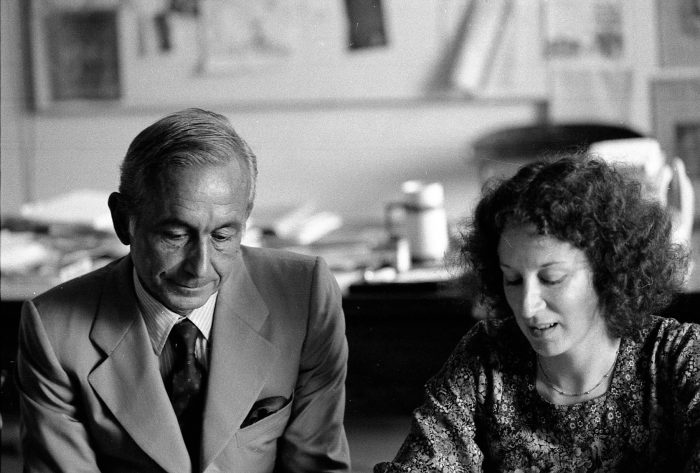I first met Margaret Atwood (or Peggy, as she likes to refer to herself when not writing), in the pages of Surfacing.
It was the beginning of a 20-year long relationship with her writing and the dystopian themes that run through most of her novels.
I’ve since read most of her work, mesmerized by her intelligence, wit, and her unflinching fascination with macabre images that have stuck to my psyche like barnacles to a ship.
I remember vividly, the disturbance I felt in my gut when I read this passage in Bodily Harm:
“This is the grand finale, the policeman said. The picture showed a woman’s pelvis, just the pelvis and the tops of the thighs. The woman was black. The legs were slightly apart; the usual hair, the usual swollen pinkish-purple showed between them; nothing was moving. Then something small and grey and wet appeared, poking out from between the legs. It was the head of a rat.”
Reading this felt like driving past a horrific accident scene unable to tear my gaze away from the deathly carnage. Let’s just say, Margaret knows how to hook the reader.
How about her infamous poem: [you fit into me].
you fit into me
like a hook into an eye
a fishhook
an open eye
The power of this image has never left me.
But Dame Margaret is not a horror writer. The New Yorker gave her the moniker “Prophet of Dystopia,” which is the reason I eventually took a break from reading her novels, having found them much too depressing when my children were little wee ones.
On this, her 81st birthday, I compiled some strange but true facts about Ms. Atwood that might inspire you to return to her books, or perhaps, give them up for good. The choice is yours.
1. Did you know that Atwood is an inventor? She invented The LongPen, which is a remote signing device she conceived in 2004 and debuted in 2006. It allows a person to remotely write in ink anywhere in the world via a tablet, PC, and the Internet, and a robotic hand.
It is as if she predicted the social gathering limitations placed upon us due to COVID-19. I can see the billboard now:
Can’t get together for a book signing? No problem. This little gadget will sign your book without ever having to be in physical proximity with the author.
2. Margaret is an investor in Recompose, a company that composts your corpse, which, wouldn’t you know it, is carbon beneficial. You get put into a pod and come out as compost. No fossil fuels used. To quote Margaret directly, “They promise tasteful facilities. They’re in Seattle.”
3. She once asked this question on Twitter: “Q. for math whizzes: If all people died at once, how much C02 and methane would be released? Are we a giant carbon sink? Just wondering.”
4. If you are a writer, you may have read Margaret’s book on the craft titled simply: On Writers & Writing. I always thought that was a boring title and recently learned that the original title—the one caboshed by Atwood’s publisher—was “Negotiating with the Dead.” They told her to get rid of the “D” word, thinking it would put people off. I rather like that title. It’s much more Atwood.
5. For the foodies out there, you may have a thing or two in common with Margaret. She is an entomophagist—someone who consumes insects. Her bugs of choice are giant locusts, which she says, “are delicious, toasted.”
6. As a young writer, she didn’t starve because she was frugal. She told Wealthsimple, “I once bought this enormous cow’s tongue—they were fairly cheap—and put it in this pot and started to boil it. It was horrifying, this tongue sticking out of my pot.” (Quite the visual.)
7. For the lovers of sweets, she wrote and published a baked lemon custard recipe online for Bon Appétit in 2006. “As the batter bakes, it separates into two distinctive layers—cake on top and custard on the bottom.” Sounds delish. The ingredients for the recipe are tucked inside my kitchen cupboard. I’ll make it tomorrow in celebration of her birthday. If you want to join me, the recipe is here.
8. Margaret Atwood’s very first novel, The Edible Woman, was released in Canada in 1969. She wasn’t popular then, and her first book signing for the debut novel was in the men’s sock and underwear department of the Hudson’s Bay store in Edmonton, Alberta—my home town.
How ironic, to host a book signing in a department store, considering the book was a satirical take on consumerism in North America. But a writer’s gotta do what a writer’s gotta do to get her work out there, and thank our lucky stars that she did, because where would we be without Atwood’s most popular novel, The Handmaid’s Tale?
9. In an interview with Adam Grant, Atwood said, “I procrastinated about starting The Handmaid’s Tale for about three years. I thought it was just too batty.” Eventually, the batty idea turned into the winner of the Governor General’s Award, the first Arthur C. Clarke Award, the Booker Prize, and the Prometheus Award. Then came the 1990 movie, the Hulu television series (if you haven’t seen it yet, please do yourself a favor and binge this weekend), and strangely enough, an opera.
10. Ms. Atwood even had a cameo appearance in the first season of “The Handmaid’s Tale.” It’s shadowy and dark, just like our Margaret. Have a look-see here. When filming the scene, Elisabeth Moss, playing Offred, said to Ms. Atwood, “Hit me harder! Give me a real smack.”
And finally, the best for last—a few quotes from Dame Margaret that, whether or not you are a writer, will leave you thinking late into the night.
“The darkness is really out there. It’s not something that’s in my head, just. It’s in my work because it’s in the world.”
“Possibly, then, writing has to do with darkness, and a desire or perhaps a compulsion to enter it, and with luck, to illuminate it, and to bring something back out to the light.”
“Madness is only an amplification of what you already are.”
“When you can’t tell the difference between your own pleasure and your pain then you are an addict.”
“This above all, to refuse to be a victim. Unless I can do that I can do nothing.”
For those diehard Atwood fans out there who may fear her novels will disappear in the sands of time, do not despair. Atwood collaborated with a Scottish artist, Katie Paterson, who planted 1,000 trees in Nordmarka, outside of Oslo. Every year, until 2114, one writer will be invited to contribute a new text to the collection and in 2114, the trees will be cut down to provide the paper for the texts to be printed and finally read.
We will sadly not be here to read Ms. Atwood’s posthumous work, but our future generations will be and that, dear fellow Atwooders, is a good thing.
~











Read 18 comments and reply